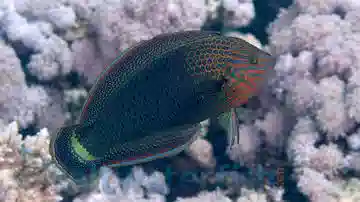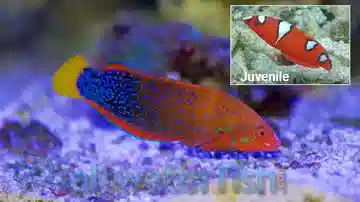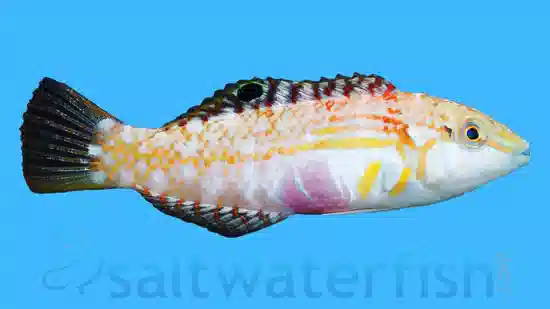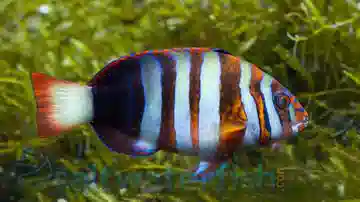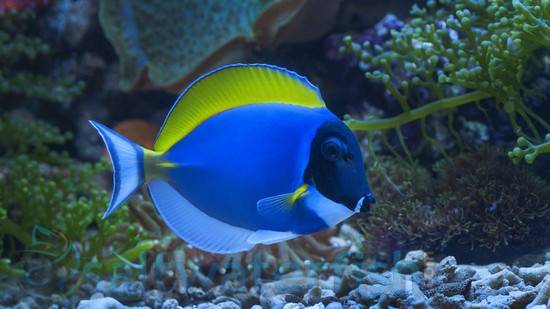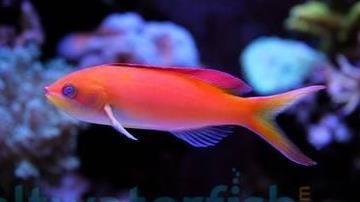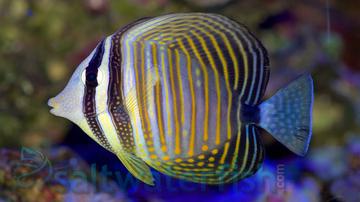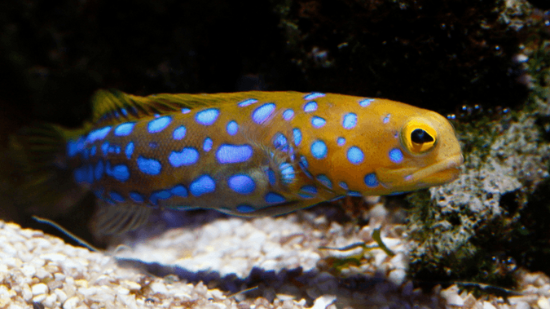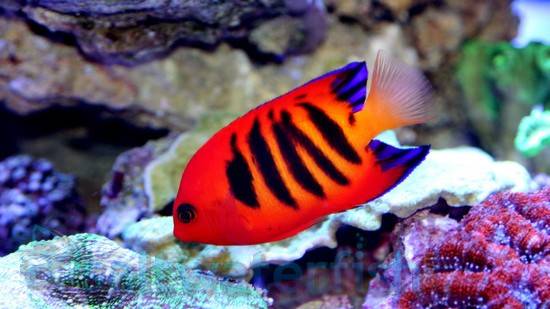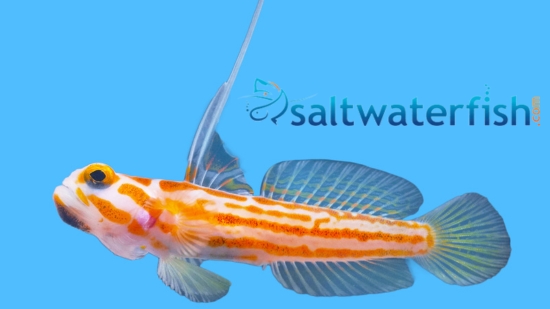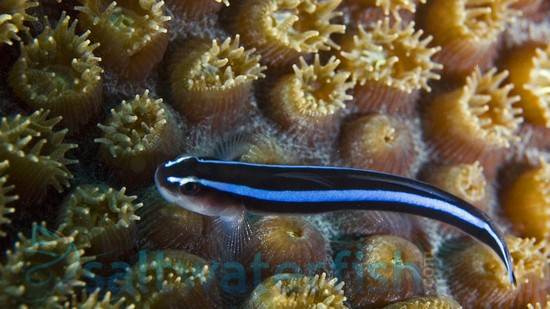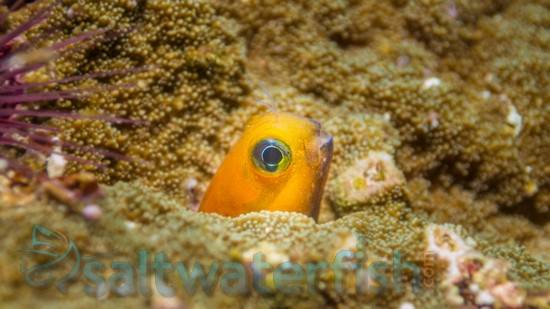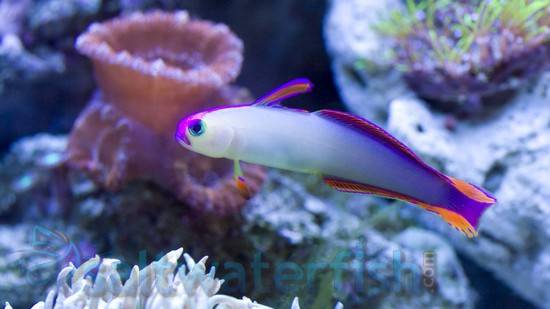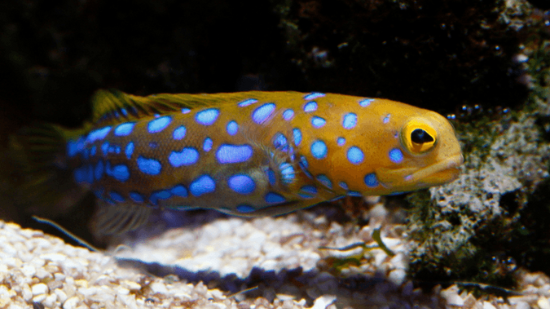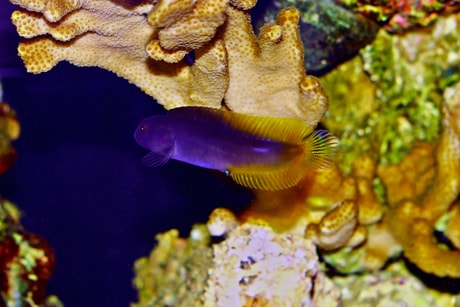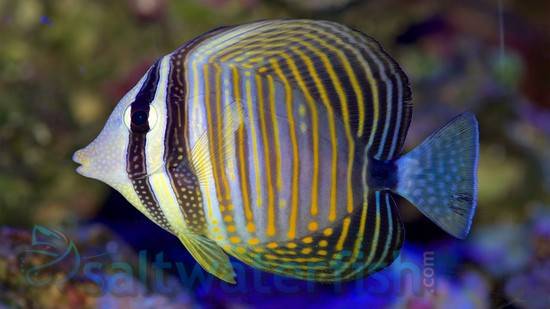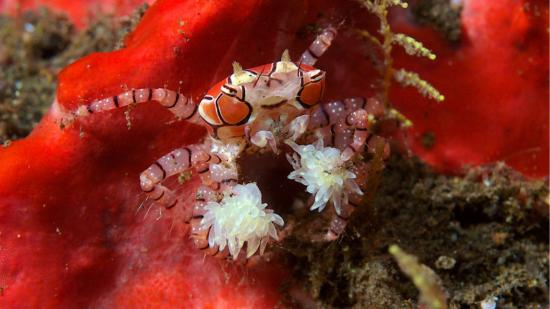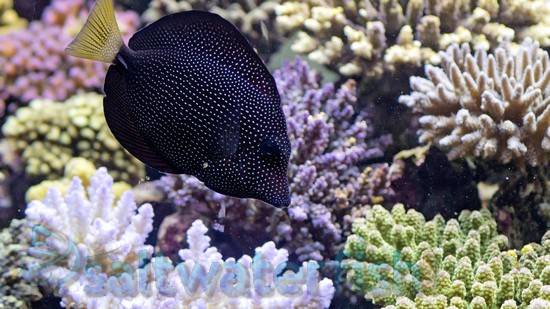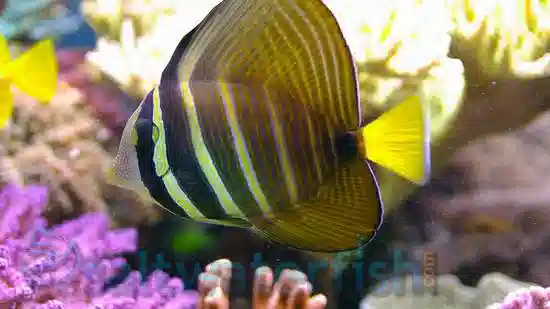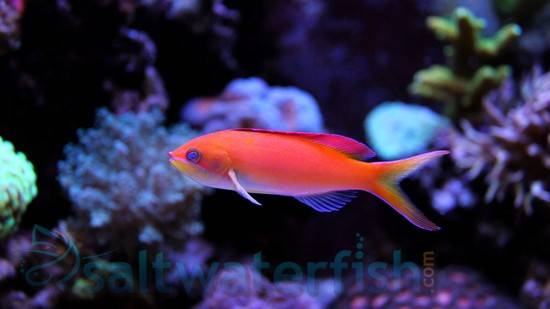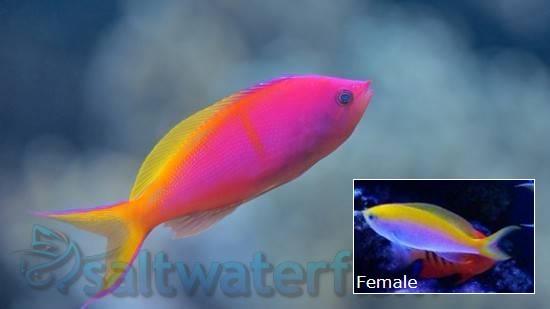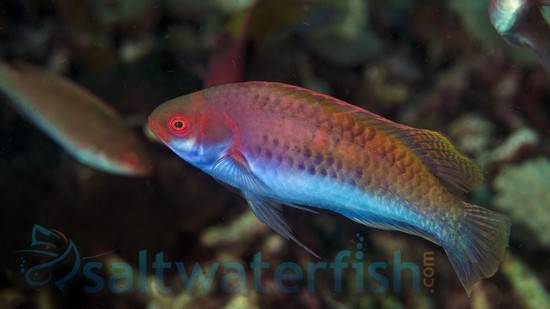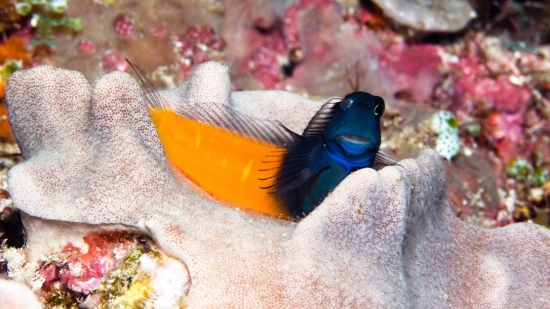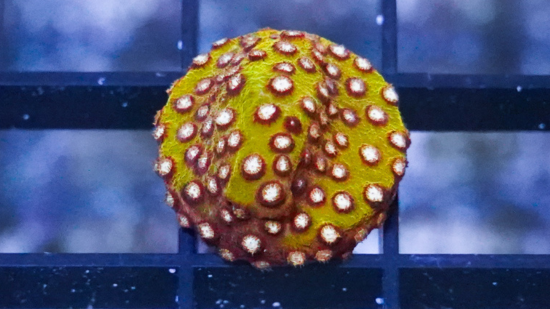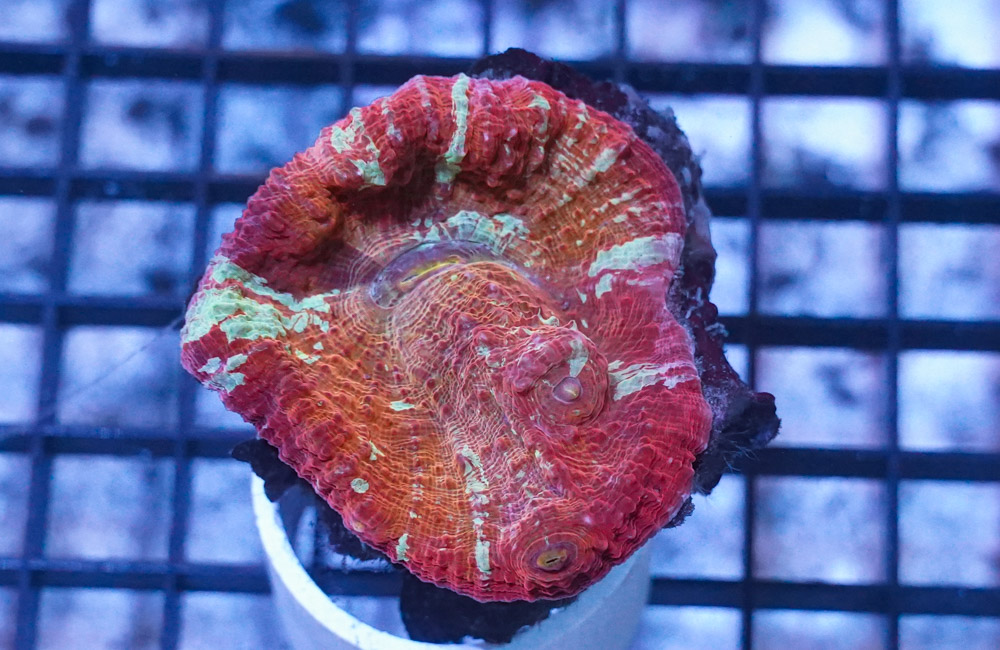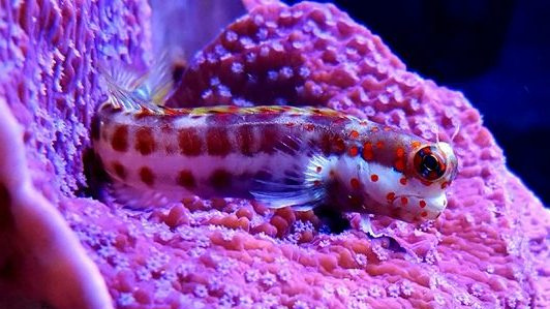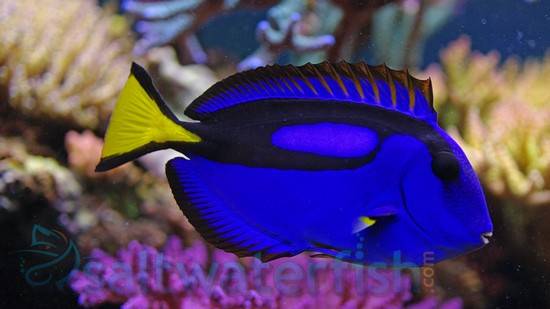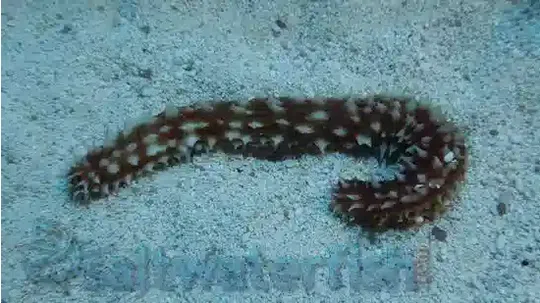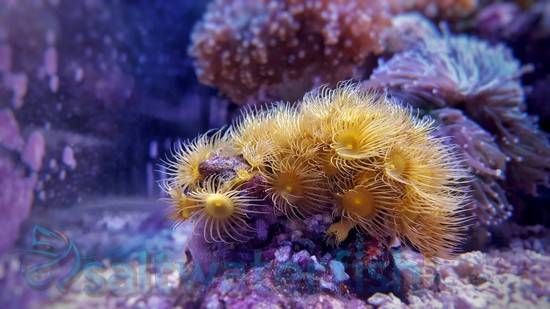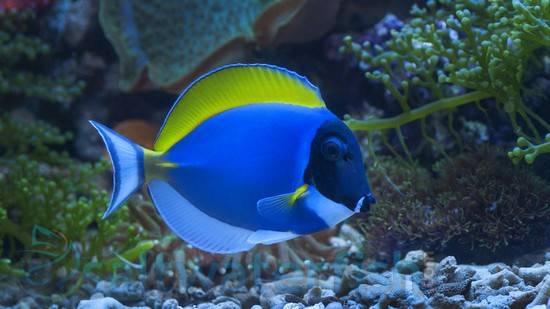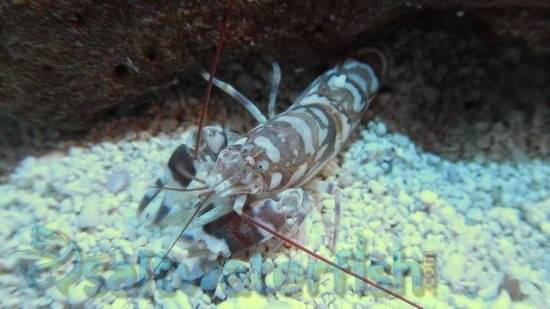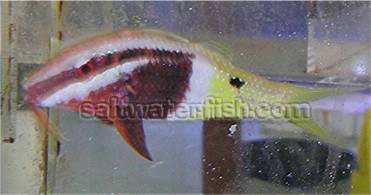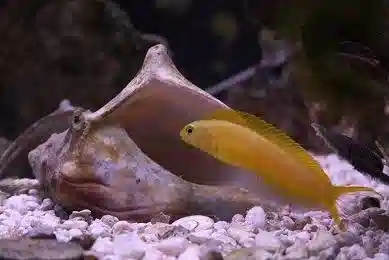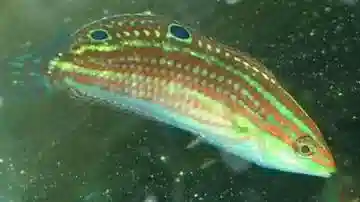Christmas Wrasse - Hawaii
Halichoeres ornatissimus
(1 Reviews)
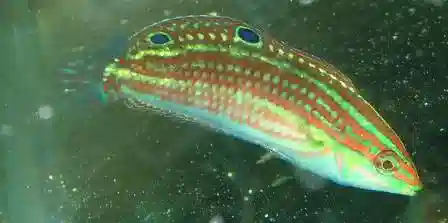
Christmas Wrasse - Hawaii
Halichoeres ornatissimus
(1 Reviews)
{{ item.name }}
Size: {{ item.extra_field_3 }}
${{ getFormattedPrice(item.saleprice) }} ${{ getFormattedPrice(item.price) }}
To join the waiting list, click here
Free Shipping
With
$199.00
or more in Marine Life.
More details...
Christmas Wrasse - Hawaii Care Facts
| Care Level: | Moderate |
|---|---|
| Temperament: | Peaceful |
| Diet: | Carnivore |
| Reef Safe: | No |
| Minimum Tank Size: | 70 Gallons |
| Max Size: | 7 inches |
With its red stripes and checkerboard-like markings, the Ornate Wrasse makes a beautiful fish in any aquarium. The Ornate Wrasse is commonly referred to as the Christmas Wrasse. The Ornate Wrasse is considered as one of the most active wrasse group fish. The Ornate Wrasse mostly buries itself in the substrate or rockwork when young, thus keeping a good amount of sand substrate is necessary. The Ornate Wrasse is one of the most aggressive wrasses, so it should not be housed with any peaceful fishes. The Ornate Wrasse grows aggressive as it matures and ages. The Ornate Wrasse should not be kept with invertebrates and other crustaceans. The Ornate Wrasse is also found nipping over the polyps and fleshier corals, so it should not be kept in a reef tank. Make sure you don?t keep feather duster worms, crabs and shrimps in the same tank where it inhabits. The Ornate Wrasse should be given a diet of meaty foods such as frozen and prepared foods. The aquarium should contain plenty of rocks and caves, where it can take graze or take rest when required.
Christmas Wrasse Care Guide
The Christmas Wrasse (Halichoeres ornatissimus) is a vibrant and captivating species popular among saltwater marine aquarium enthusiasts. Here, we provide an in-depth exploration of its habitat, care requirements, compatibility, and reasons to consider purchasing from Saltwaterfish.com.
Habitat of the Christmas Wrasse
The Christmas Wrasse is native to the Indo-Pacific region. It is commonly found in coral reefs, lagoons, and rocky areas with abundant hiding spots. Its natural habitat consists of clear, warm waters with ample corals and rocky outcrops for foraging and shelter.
Reef Compatibility of the Christmas Wrasse
This species is not considered reef-safe, making it suitable for FOLWR aquariums. Caution should be exercised with small invertebrates, as the Christmas Wrasse may occasionally exhibit predatory behavior towards tiny crustaceans like shrimp and small snails.
Size and Lifespan of the Christmas Wrasse
Juvenile Christmas Wrasses typically measure 2 to 3 inches in length, while adults can reach up to 7 inches. With proper care, they can live for up to 5 to 7 years in captivity.
Diet in Captivity of the Christmas Wrasse
The Christmas Wrasse is carnivorous, primarily feeding on small crustaceans, worms, and tiny invertebrates in the wild. In captivity, they readily accept high-quality marine pellet or flake foods supplemented with frozen or live offerings such as brine shrimp, mysis shrimp, and chopped seafood.
Aquaculture and Availability of the Christmas Wrasse
While wild-caught specimens are still available, aquacultured Christmas Wrasses are becoming increasingly common in the hobbyist market. At Saltwaterfish.com, we prioritize offering sustainably sourced aquacultured specimens, reducing the impact on wild populations, and providing healthier, acclimatized fish for your aquarium.
Compatibility with Other Fish and Invertebrates
The Christmas Wrasse is generally peaceful towards other fish species but may exhibit territorial behavior towards conspecifics or similar-looking wrasses. Compatible tank mates include peaceful reef fish such as Clownfish, Gobies, Anthias, and Blennies. Avoid pairing them with aggressive or territorial species to prevent conflicts.
Sexual Dimorphism of the Christmas Wrasse
Male Christmas Wrasses typically exhibit more vibrant colors and elongated fins than females. Juveniles may display different coloration patterns, with males developing their distinctive adult coloration as they mature.
Tank Requirements for the Christmas Wrasse
A minimum aquarium size of 70 gallons is recommended for a single Christmas Wrasse, with larger tanks providing more swimming space and minimizing territorial behavior. To simulate their natural environment, maintain stable water parameters with a pH of 8.1-8.4, salinity levels of 1.023-1.025, water temperature between 75°F and 82°F, and moderate water flow.
Why Choose the Christmas Wrasse from Saltwaterfish.com?
Quality Assurance: We guarantee the health and quality of our fish, offering a 14-day Arrive Alive, Stay Alive® guarantee.
Sustainability: Our commitment to aquaculture and sustainable practices ensures you receive ethically sourced marine life for your aquarium.
Expert Support: Our team of marine enthusiasts is here to provide expert advice and guidance, ensuring a successful and rewarding aquarium experience.
Wide Selection: Explore our diverse range of marine fish, corals, and invertebrates to create your ideal underwater ecosystem.
Convenience: With convenient online ordering and nationwide shipping, acquiring your dream Christmas Wrasse has never been easier.
Other Common Names of the Christmas Wrasse
The Christmas Wrasse is known as the Ornate Wrasse or Ornate Leopard Wrasse due to its intricate coloration and patterning.
Compatible Tank Mates for the Christmas Wrasse
- Royal Gramma (Gramma loreto)
- Firefish Goby (Nemateleotris magnifica)
- Cleaner Wrasse (Labroides dimidiatus)
- Banggai Cardinalfish (Pterapogon kauderni)
- Orchid Dottyback (Pseudochromis fridmani)
In conclusion, the Christmas Wrasse is a stunning addition to any saltwater aquarium, boasting striking colors and a peaceful temperament. When purchasing from Saltwaterfish.com, you acquire a beautiful specimen, contribute to marine conservation efforts, and receive unparalleled support and expertise.
A gorgeous healthy Christmas Wrasse. Arrived quickly and adapted quickly. Likes to hang out with my Mimic Tang. I purchased three different species and everyone is doing well!
Reviewed by: Mary Hallston on Jan. 1, 2022


